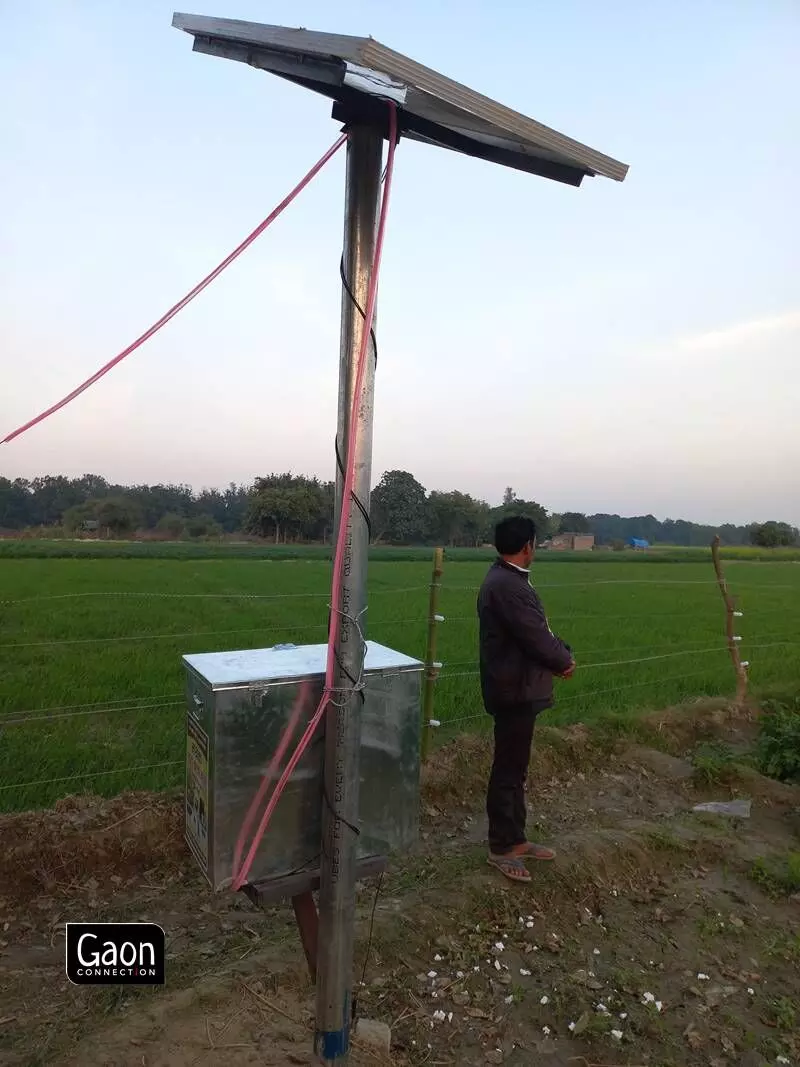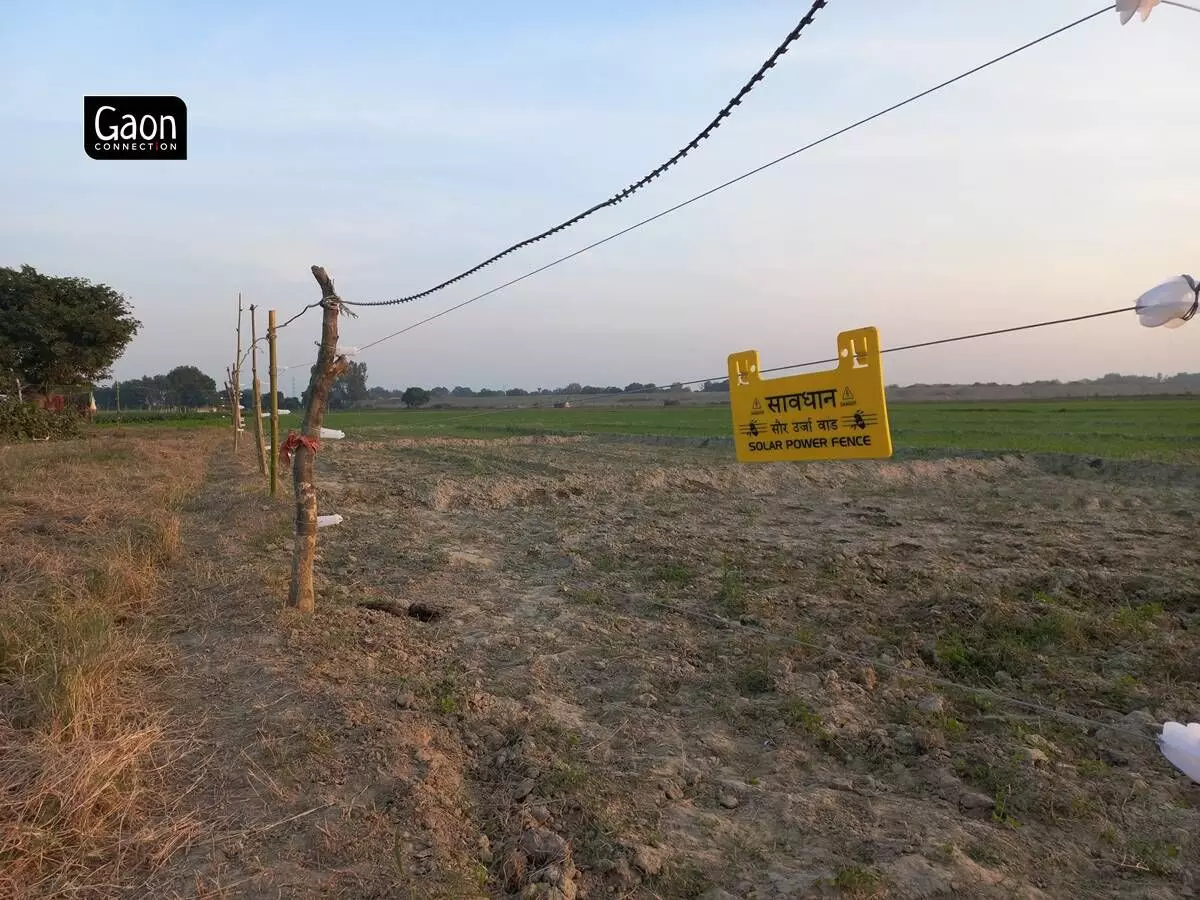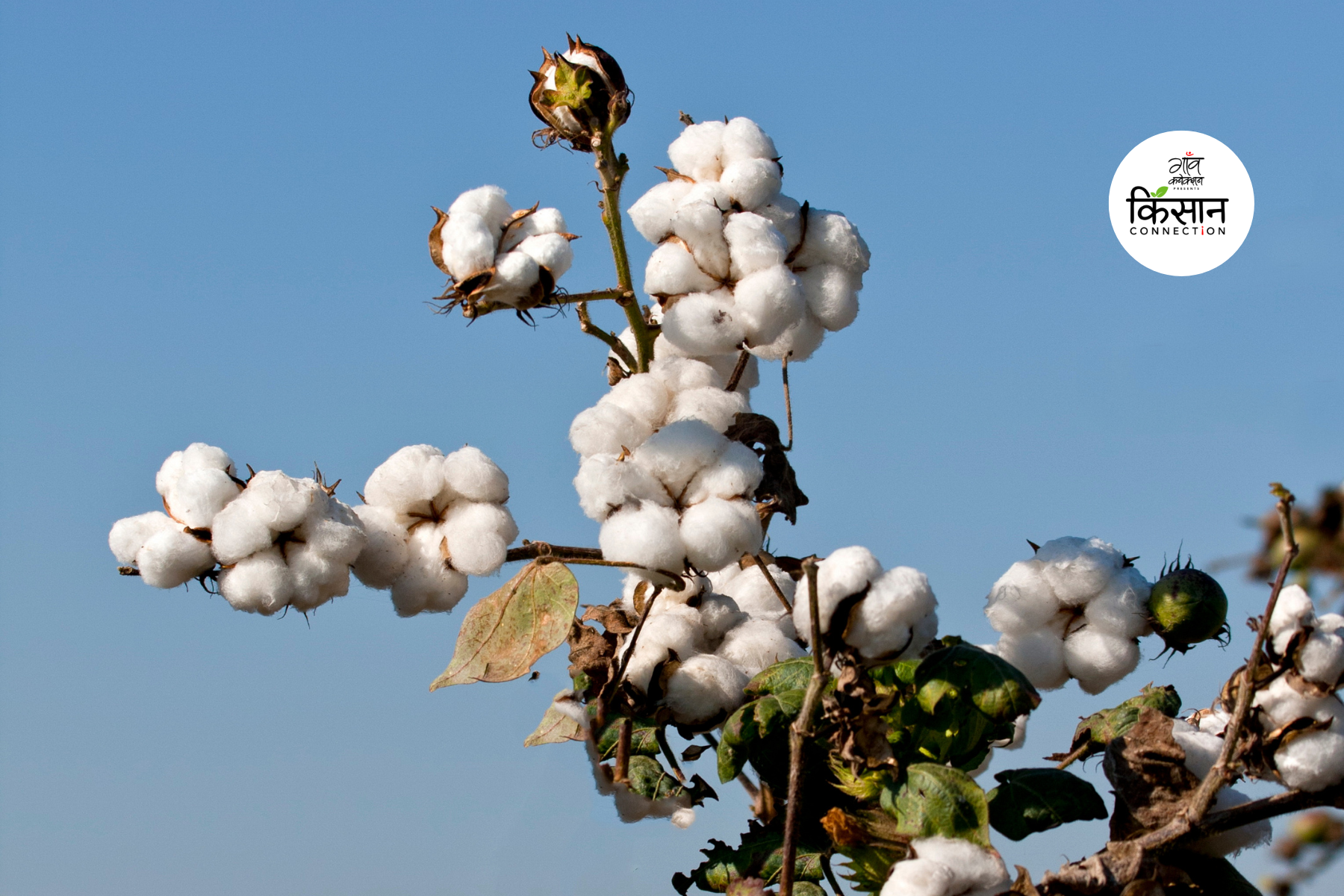Durjan Khera (Unnao), Uttar Pradesh
This winter is pleasantly different for Ram Bharose Yadav. The 72-year-old can finally sleep in his cot inside his house at night.
The resident of Durjan Khera village has lost count of the number of biting cold nights he has spent in his four-bigha farm in Unnao district of Uttar Pradesh to guard his crops and keep stray cattle at bay.
Spending winter nights outdoors keeping vigil was cold, uncomfortable, tiring and frustrating. Despite the precautions, the cattle did stray under the cover of thick fog and made a meal of a big swathe of his crop.

The solar electric fencing costs Rs 1,300 for 10 kilograms while the barbed wire fencing comes at Rs 700 per 10 Kgs.
“Last year, stray cows and bulls wreaked havoc on my crops. We barely harvested 20 quintals of wheat which was sold for Rs 25,000,” the farmer told Gaon Connection.
But this year is different. Ram Bharose now sleeps in peace. All because he has a solar-powered electric fence which keeps the stray cattle at bay.
“We spent Rs 25,000 to set up an electric fence which is powered by solar energy. It includes a solar panel and a battery. The battery sends a non-lethal electric shock through the fence whenever an animal comes in contact with the metal wires set up on the perimeter of the field,” he explained.
The solar panel’s capacity is 105 watts and the battery is of 40 amperes. It works all through the night as it gets powered during the day time.
Like Ram Bharose, a number of farmers in Uttar Pradesh are coming forward to install solar fencing in their farms to protect their crops. Crop depredation by stray cattle is a huge problem in the northern state.
As per the findings of the 20th Livestock Census-2019 All India Report, the stray cattle population continues to be on the rise in Uttar Pradesh. While the number of stray cattle in other parts of the country has reduced by 3.2 per cent between 2012 and 2019, in Uttar Pradesh their numbers have increased by 17.34 per cent in the same time period. There are more than 1.18 million stray cattle in the state.

The solar panel’s capacity is 105 watts and the battery is of 40 amperes. It works all through the night as it gets powered during the day time.
Stray cattle menace has caused untold misery to farmers. It forced Sukhbir Singh, a 38-year-old teacher-cum-farmer from Karnipur village, to give up farming altogether.
“I am a teacher by profession but own three bighas of land on which I tried to cultivate wheat and paddy but failed due to stray cattle. Even when I gave my land on lease, farmers couldn’t grow anything either because of the stray cattle menace,” he told Gaon Connection.
But this year, Sukhbir Singh decided to start cultivation again and invested Rs 40,000 on putting solar fences around his land.
“Whenever an animal comes into contact with the fence, it sets off a siren which alerts me. I also am at peace because I know that the fences do not cause bodily harm to the cattle, and my crops are safe,” he said.
Solar fences do not harm the cattle, as barbed wire fencing does, said Kamal Kumar, a 48-year-old farmer from Subbakheda village.
“We have seen the barbed wires causing deep cuts on the animals, electric fences just repel them without causing any injuries,” he said. Also, police officials who took them to task if any animal got injured would not do so now, he pointed out.
Mayank Singh, a 32-year-old owner of an electric appliances shop in Unnao told Gaon Connection that the solar fence is in great demand amongst the farmers.
“The cost of putting up a solar fence is the same as a barbed wire one because a shorter length of electric wire is needed for securing the parameter of a field. There is a warranty of one year on these devices and they mostly last at least five years,” Mayank Singh said.

Solar fences do not harm the cattle, as barbed wire fencing does, said Kamal Kumar, a 48-year-old farmer from Subbakheda village.
The solar electric fencing costs Rs 1,300 for 10 kilograms while the barbed wire fencing comes at Rs 700 per 10 Kgs. However it takes a lot more barbed wire to fence a field, at least five times the weight of electric wire.
There are farmers like Nagendra Prasad who are demanding financial support from the government to set up solar fencing of their fields.
“It was impossible for me to cultivate anything on my four bigha land. I gave up and when I tried to lease my land, no one wanted it,” the 68-year-old said. He complained that despite the state government launching a crop safety scheme to safeguard farmlands from stray cattle, nothing has been done so far.
“Two years ago, I heard that the government would introduce solar-powered electric fences but I had to pay for the fence myself. There has been no support from the government’s side till now,” he said.
Kuldeep Kumar Mishra, the district agricultural officer informed Gaon Connection that so far there is no directive from the government to distribute solar fences to the farmers free of cost, or at a subsidised cost.
“As soon as we receive orders to solar fence the agricultural fields, we will help the farmers,” said the official.
The story was done as part of the Renewable Energy Workshop Organised by the Earth Journalism Network in Lucknow, UP.




















